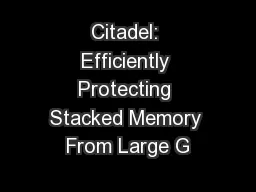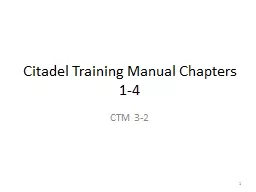PPT-Citadel: Efficiently Protecting Stacked Memory From Large G
Author : ellena-manuel | Published Date : 2016-03-02
June 14 th 2014 Prashant J Nair Georgia Tech David A Roberts AMD Research Moinuddin K Qureshi Georgia Tech Current memory systems are inefficient in energy and
Presentation Embed Code
Download Presentation
Download Presentation The PPT/PDF document "Citadel: Efficiently Protecting Stacked ..." is the property of its rightful owner. Permission is granted to download and print the materials on this website for personal, non-commercial use only, and to display it on your personal computer provided you do not modify the materials and that you retain all copyright notices contained in the materials. By downloading content from our website, you accept the terms of this agreement.
Citadel: Efficiently Protecting Stacked Memory From Large G: Transcript
Download Rules Of Document
"Citadel: Efficiently Protecting Stacked Memory From Large G"The content belongs to its owner. You may download and print it for personal use, without modification, and keep all copyright notices. By downloading, you agree to these terms.
Related Documents














